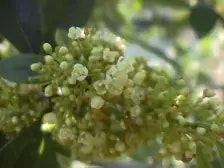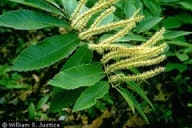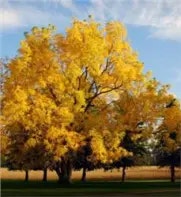Medicinal/Food plants
Wild Black Cherry Tree
This common native fruit is great raw, or cooked with herbs or spices, thickener and sweetener, to use in sauces, pies, cakes, puddings, and ice cream. Flowers bloom on spikes, but don’t smell very good. Fruit is better if grown in full sunlight. The black cherry tree is a notably straight-growing tree that can sometimes reach up to 100 feet tall. For more information see: USDA Plant Guide Wild Black Cherry Tree.

A black cherry jelly making tutorial is at: https://www.youtube.com/watch?v=ma-Ax_cGdt8
A recipe for wild black cherry sauce is found at: http://www.suburbanforagers.com/2012/08/20/recipe-wild-black-cherry-sauce/
Black Cherry Conserve
2 juice oranges
1 quart wild cherries
3/4 tsp ground cinnamon
6 tbsp lemon juice
3-1/2 cups sugar
Cut the oranges into thin slices, remove the seeds, place in a deep saucepan and cover with water. Cook till skins are tender. Steam and clean cherries. Strain cherries through a food mill to remove pits. Add pulp to cooked orange slices and mix, then add spices, lemon juice and sugar. Mix thoroughly and simmer over a low heat till thick. Mixtures will appear somewhat clear when ready. Remove from heat and spoon mixture into hot, sterile jelly jars and seal. The black cherry has also been used for medicinal purposes; see:http://www.aihd.ku.edu/foods/agave.html
Chickasaw Plum
The Chickasaw Plum is a twiggy, multi-trunked tree that grows 15-30′ tall. Like the Flatwoods Plum, it produces fragrant white flowers in early spring before leaves emerge, and yellow edible fruit ripening to red in the fall. A good tree for small areas. For more information see: USDA Plant Guide Chickasaw Plum.

Flatwoods Plum
This fruit tree produces showy white flowers in spring which produce a lovely purple plum. Being Florida tolerant, it enjoys slightly acidic sandy soil; but it is not salt tolerant. Full sun to partial shade.


Common Persimmon
The persimmon is a slow-growing deciduous tree, rarely exceeding 50′ in height. Though flowers are greenish and inconspicuous, they produce showy orange fruits, up to 2″ in diameter, that are deliciously sweet when fully ripe. It is one of the most widely-adapted of trees. For more information see: USDA Plant Guide Common Persimmon.

Eastern Mayhaw
Also called the May hawthorn, Mayhaw, and Apple Hawthorn. Commonly found in river swamps, pond areas, and along stream banks, the Eastern Mayhaw is often used for the stabilization of banks. It is also, however, wind and drought tolerant making it great for shelterbelts. It has narrow dark-green leaves with white blooms that bloom in early to late spring. The small, red fruit is used for jellies, jams, baking and flavoring. The tree will begin to bear fruit around 5-8 years. For more information see: USDA Plant Guide May Hawthorn or HERE.

Elderberry Bush
An extremely versatile plant, the Elderberry bush was and is still a very important resource for Native Americans. The small white flowers are used in teas, medicines and can be eaten raw or fried. The small purple or blue berries can be gathered to make jams, syrups, wines, sweet sauces, and pies, or dried and preserved. The stems can be used in basketry and the berries as a dye. This large shrub grows 6-13 feet tall. It will start to flower and fruit after 2-3 years, growing to maturity in about 5. They grow best in moist, well-drained sunny sites. For more information see: USDA Plant Guide Elderberry. Click here for a Fried Elderberry Flower recipe.

Sugarberry or Hackberry
This tree has very interesting bark and produces dark purple berries that the birds will love. Some Indians used to grind up the entire berry, stone, kernel and all, and make a paste out of it, either to bake in a fire or to add with fat and parched corn to make a gruel. Others removed the pulp, eating that separately. Then they lightly dried the kernel and cracked it. The inner kernel was considered a delicacy and the outer shell was ground up and used as a spice, usually on meat. The stone can be eaten raw and they also store well in oil. The sugarberry prefers moistrue and the tree gets very tall. (Up to 100′) It is a fast growing tree, but in the first 15 they should be pruned to have wide crotches. If aphids come around, try spraying on some neem oil.


Pawpaw Tree
An important source of food for early European settlers, the Pawpaw fruit has a high nutritional value with a low water count, making it comparable to a banana. It is used in breads, pies, muffins and ice cream. Native Americans mashed fruit to make small cakes that were dried and stored. The dried cakes were soaked in water and cooked to make a sauce or relish that was served with corn bread. This plant spreads quickly by suckers to form a “pawpaw patch.” Remove suckers as they form if a tree form is desired. Sucker formation slows as the tree develops. Other than control of suckers, the plants do not require pruning. The plants are disease and pest resistant and they are not browsed by deer. Dark purple flowers bloom in late spring. For more information see: USDA Plant Guide Pawpaw and HERE.

Dahoon Holly
Dahoon holly is a small tree that has a narrow growth habit of upward pointing branches that grows to a height of up to 30 ft (9.1 m). It is often found in swamps and other wet locations where it achieves its greatest size, but will survive in dry areas if watered. In warm winter areas the dahoon is evergreen. Small white flowers are inconspicuous and appear in spring. In the winter, female trees are covered with bright red or yellow berries just in time for Christmas decorating. (plant 3 or 4 for stronger probability of a female which produces the berries.) If the leaves are boiled in water, no longer than 10 minutes, they are a source of caffeine and antioxidants. Longer than 10 minutes could cause nausea. Berries are only good for the birds…literally! Dahoon is adaptable to most conditions from full sun to deep shade. Tolerates brackish water. Dahoon holly is listed as commercially exploited species by the Florida Department of Agriculture, so do your part to “Save the Dahoons!!”


Pecan Tree
The Pecan tree is the largest of the hickories — growing 70 to 100 feet high; plant where they can have lots of space. It is best to grow a pair of them for adequate pollination. Transplant when young, since the tree has a deep taproot that is easily damaged. Plant in deep, organic, well-drained soils in full sun. It will be important to water young trees during periods of dry weather, especially during summer the first and even second years after planting. Mulches should be used around newly planted trees to conserve moisture and prevent weeds. Many American Indians relied on pecans as an important food staple; they gathered wild pecans and combined them with fruits and vegetables (including beans, corn, and squashes), created an energy drink with pecan milk, used ground pecan meal to thicken meat stews, and included roasted pecans as part of their travel supplies to sustain them along the journey when food was scarce. For more information see USDA Plant Guide Pecan.

American beech
This large tree has a wide canopy of leaves once it reaches maturity and can live for centuries! It is a slow grower, and is easy to identify by its smooth, silvery-gray bark which stays smooth and thin even through maturity. It has beautiful fall colors and a small nuts enjoyed by humans and critters alike.



Flowering occurs in the late spring at about the same time as its better known relative the silverbell tree. Although the flowers are on the small side, even a small bush produces large numbers hanging below the branches.
Chinquapin
A native bush with small sweet chinquapin nuts. Nuts similar to chestnut but not as large. A pretty ornamental in sun or shade, leaves turning bright yellow in fall. Mature height 6′-12′. Best to have two to set fruit. Space 10′ apart.



Pignut Hickory
The pear-shaped nut ripens in September and October and is an important part of the diet of many wild animals. The wood is used for a variety of products, including fuel for home heating. Its flowers appear in Spring. The fruit is obovoid to pear-shaped, 1 to 2 inches long, with a thin husk that only partially splits upon maturation. The pignut hickory has a rapid growth rate and beautiful yellow fall leaves.


Black walnut
Black walnut has large, aromatic, compound leaves, 1-2 ft (30-60 cm) long. It bears rather large oval corrugated nuts that are encased in a thick, fleshy yellow-green hull which ripen in the fall. Black walnut is intolerant of shade. Plant in full sun away from other plants and in moist yet drained soil. is often recognized as one of the most valuable of North American hardwoods. It is commonly used for gun stocks, cabinetry, and the creation of both solid and veneered furniture.



Spicebush
This shrub is especially attractive to wildlife including birds, deer, rabbits, raccoon, and opossums. The leaves and fruit are edible although mainly used for teas and spices. The berries are also fragrant and can be preserved and used in sachets. The bush grows 3-9 feet high and is shade tolerant. If they are grown in at least some sun, they will produce yellow leaves during the fall. The berries are seen from July through September and are quickly eaten by wildlife. For more information see USDA Plant Guide Spicebushand HERE.
